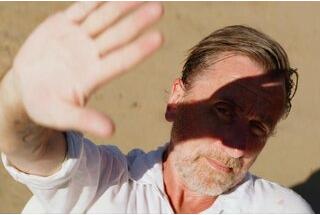Kristoffer Engholm Aabo talks about his work on "Crooks - Heart of Vengeance", music video directed by Snorre Ruhe
"Vengeance 80", by François ReumontThis is a music video for cinema buffs…
Kristoffer Engholm Aabo : Even though I haven’t had the opportunity to shoot a feature film yet, I live and breathe through cinema, so I’m very proud of this music video ! I’ve already shot about 88 of them, and when this one was suggested to me, I had a feeling that something special might happen. Being selected for Camerimage is the best reward of all.
Have you worked with this director before ?
KEA : I’ve known Snorre Fuglsang Ruhe for a long time, but I’d never had the opportunity to work with him before. So, we both enthusiastically embarked on this project. Snorre is a very meticulous person, who works very hard and gets involved at every level of production. He even made some of the costumes himself ! We were given free rein to do what we wanted by the band, and the production team was very much on the same wavelength as us, which gave us a lot of freedom to be audacious and explore different visual styles. For example, on "Crooks - Heart of Vengeance", there is of course the prologue and the epilogue, -the dialogue in the car-, or later, the screams and sound effects that were added to the original piece of music... It’s rare to have this kind of freedom in a music video !
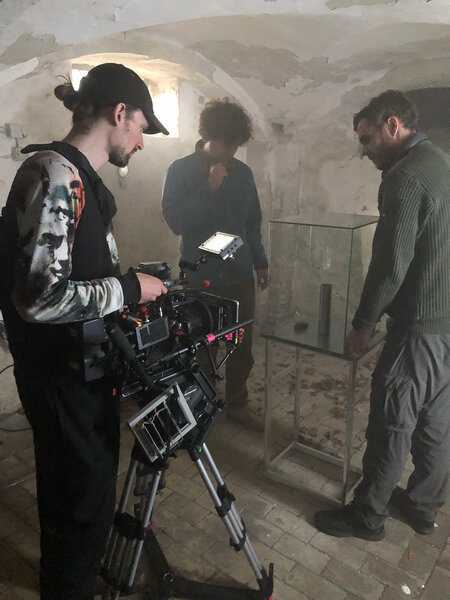
What was the initial concept ?
KEA : Snorre had been thinking of creating a music video based on a fake trailer for an 80s action or horror B-movie for some time now, and it’s a dream to have been able to pull it off with him. We rewatched a lot of real trailers from that era, studying their editing and narration styles. One of the most important things for us was not to reveal too much of the plot, or at least to keep a sense of mystery in each scene. For example, that strange bluish sequence that seems to take place in some kind of research laboratory, with the walls covered in silver and the character knocking over everything around him. We wanted to show, rather than explain, in a way.
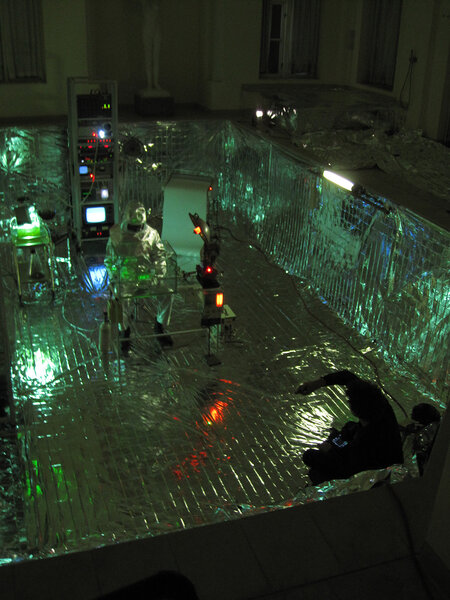


When we think of 80s fantasy cinema, we think of John Carpenter, the use of CinemaScope and blue flares...
KEA : Yes, the use of CinemaScope seemed essential for "Crooks - Heart of vengeance". I chose the Kowa anamorphic series, which I’m familiar with because I’ve used it often in music videos. To me, it’s the best compromise between practicality and experimental use, with beautiful flare effects and a successful transition in and out of focus. I also used filters on which we applied colours or water. I used them for example in the prologue and epilogue, to enhance the pouring rain effect on the windows. The light in turn projected liquid patterns onto the faces. For this scene, which is the only one with dialogue, filmed in shot-reverse shot, and not really in the same line as the rest of the music video, I used an old Petzval 58mm spherical lens.
What were the main challenges during filming ?
KEA : One thing is certain, the scripted version is very similar to the final result. A few scenes didn’t make the cut, but overall, it’s very close to the original idea. Since the shooting locations were diverse, we immediately started looking for a unique location that could bring together as many of them as possible. A large upper middle-class house in the middle of the countryside saved us. It’s a pretty incredible place, almost untouched since the 80s, with a large number of rooms, a large garden and even an empty swimming pool in which we were able to recreate the research laboratory set, simply by lining it with survival blankets. It took us 4 days to shoot the music video, in a sort of joyful frenzy, moving back and forth between the outdoors and indoors depending on the lighting, the set preparations or the special effects. Only a few shots were filmed separately, such as the sequence where the protagonist flees at full speed in his car, isolating himself in a small garage, in a little ‘studio’ setting. It was originally part of a longer sequence, involving an accident that we weren’t able to film for financial reasons. In that scene, the lighting played a crucial role in recreating the sensation of speed. For this sequence, I was inspired by the frantic style that Anthony Dod Mantle had achieved in Ron Howard’s film Rush, such as the shot where the camera is literally under the clutch pedal. To achieve this shot, we used a simple mirror placed right there, with the camera filming through it. A cheaper solution when you don’t have the opportunity to dismantle a car. For the shot through the windshield, we also installed a viewfinder with the camera mounted on a shaking hood, while two grips shook the car off-screen.
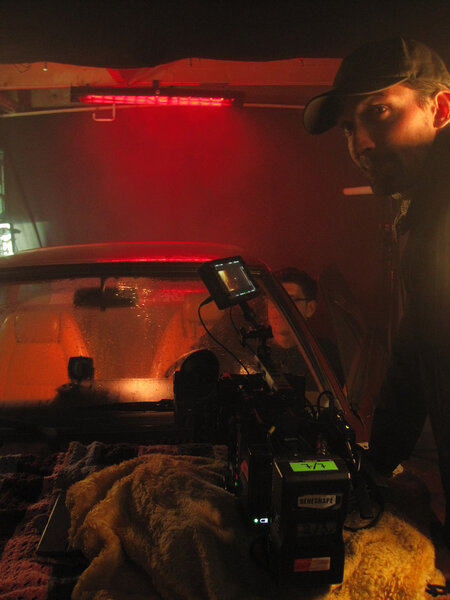
The daytime exteriors are also very menacing, with highly saturated colour shifts...
KEA : I used three custom LUTs, one for daytime interiors, one for daytime exteriors and one for night scenes. But I have to admit that a lot of these unusual colour shifts were achieved live on set using Cokin colour polarising filters. This is a series of filters originally developed for photographers, but were used by Benoît Debie, for instance, on Harmony Korine’s film Spring Breakers.
The effect is measured out by turning the filter in front of the lens on set. There were almost no needs for adjustments in post-production except for using the appropriate LUT to set the mood. For example, the balance between the cyan tones in the landscape and the red on the faces in the forest or the meadow…It was super effective.
When I took screenshots directly from the camera, they were really beautiful. The extreme colours of the scene were already there !
On camera, we shot with an Alexa Mini, pushing it most of the time to 1280 ISO, and occasionally to 1600 when we wanted more exposure latitude.
Yet, 80s cinema used 35mm and very low sensitivity compared to your 1280 ISO... Did you adapt your lighting style ?
KEA : We knew that at a certain point we’d have to give up the idea of creating an exact replica of 80s films, and establish our own visual style through the music clip. Given the number of sequences and the complexity of the narrative, we couldn’t shoot on film. So, we created a very precise mood board for each scene to establish the specific visual goals of each one. This was absolutely necessary given the number of different, very short scenes we shot every day (sometimes up to 12 different scenes of only a few seconds each). A wide variety of lighting equipment was used, including the newest SkyPanels and Orbiters, as well as Tungsten PAR 36 stage lights, and even small commercial sources to create flares directed towards the optics.
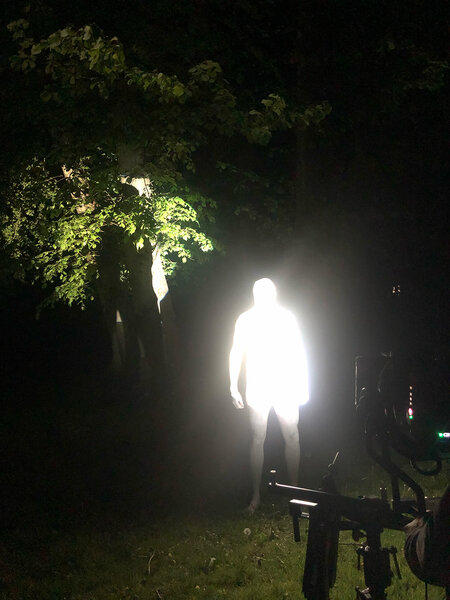

This is quite obvious in certain shots, such as the low angle shot in the staircase, where the character is standing at the top with his axe.

KEA : You can notice a beam of light emanating from a small LED bicycle lamp positioned just above the matte-box. Another technique we really appreciated was the excellent reflective quality we obtained, using the survival blankets in the pool laboratory scene mentioned earlier.
We reused them, for example, during the explosion scenes, creating a flame effect. To obtain this effect, we cheated by using amber colour projectors, reflecting their light on fluttering survival blankets.
(Interview by François Reumont, for the AFC, and translated from French by Chloé Finch)
 En
En Fr
Fr


